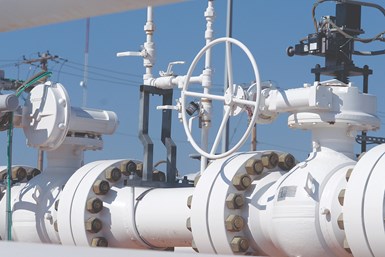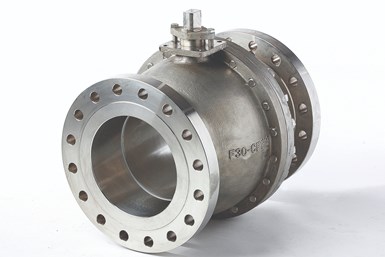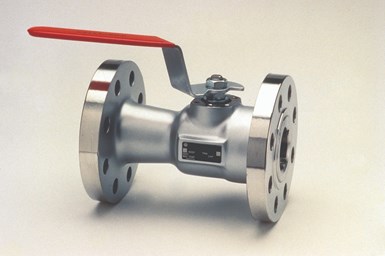Top Valve Manufacturer in China
The industrial valves market in china is projected to report substantial growth in the coming years due to new industrial infrastructure construction ventures, reconstruction and restoration of existing businesses, and extension of the gas pipeline network.
Few factors that market growth depends on are.
- The oil and gas sector has dominated the market and is expected to witness growth over the next few years due to growing oil and gas operations across the world.
- Increased demand for automatic valves is expected to be an advantage in the future.
- Asia-Pacific was the dominant market in the world, with the highest intake from countries such as China and India.
- Reports suggest that the industrial valve market globally is expected to grow up to US$ 85.19 billion by 2025.
Market these days have a large number of manufacturers and it is quite a task for consumers to select a valve as per their requirements and budget by maintaining proper quality.
If you have the same questions, you’re in the right place. This article provides you with top valve manufacturers in China. We’ve got suppliers of about any sort of valve you need. Read on and pick the best valves for your application.
We are providing a list of suppliers which are best in a selected application by:
- Structure i.e., types of the valve by design.
- Power i.e., types of the valve by an operation.
- Condition i.e., types of the valve by system parameters.
- Function i.e., types of the valve as per their use.
Classified By Valve Structure.
Top Ball Valve manufacturers in China.
Lanzhou High-Pressure Valve Co. Ltd
Established: 1938
Business Type: Exporter, OEM Supplier, Manufacturer.
Valve Types: Floating & Trunnion Mounted Ball Valve.
Certification: TS licensing A1, A2, B1, B2, API-6D, CE, ISO9001, ISO14001, OHSAS18001, TUV issued by the API 6FA gate valve, API607 ball valve fireproof test.
Lanzhou High-Pressure Valve Co., Ltd (formerly Lanzhou High-Pressure Valve Factory, short for LZHPV) associated with the Langao Group of companies, was a state-owned company founded in 1938, established as non-public enterprises in 2003 with strong support from the provinces, municipalities, and departments of districts at all levels, LZHPV was only one high-tech company in northwest China combining ‘high & low temp., high pressure, high alloy, large diameter’ valves with teams dedicated for R&D, design, manufacturing, and sales.
LZHPV currently has 178 sets of machinery for the processing center, CNC machine tools and cutting processing, 98 sets of physical and chemical machinery, NDE and PMI machinery, with superb technology, modern management principles and enhanced quality assurance method, LZHPV has established a leading role in the domestic valve industry in technology.
LZHPV invested heavily in the development of high high-pressure high-alloy valve patent industrialization ventures, and the project obtained funding from the National Development and Reform Commission, Ministry of Industry and Information Technology, for key industries and technological transformation.
NTGD Valve Co. Ltd
Established: 2005
Business Type: Exporter, OEM Supplier, Manufacturer.
Valve Types: Floating & Trunnion Mounted Ball Valve.
Certification: ISO9001/ ISO14001/ ISO18001 certified.
NTGD valve is an ISO 9001 certified company who was founded by a team of people with more than 30 years of experience in the supply of industrial valve. During these years NTGD valve has been adapting the media to new technologies. All this has allowed NTGD to provide the finest quality products and services to match the need of their clients.
NTGD Valve considers product quality and customer satisfaction as their highest priority. NTGD valve looks forward to a new client relationship by providing top-quality valves and close cooperation.
Affordable pricing and efficient distribution options make NTGD the top choice among valve manufacturers. NTGD valve specialized in valve supplies, including ball valve, gate valve, globe valve, check valves, strainer, plug valves, and butterfly valves in carbon steel, stainless steel, duplex stainless, and alloy materials. Their products conform to the latest industry standards in accordance with ANSI, ASME, API, and DIN.
Sanhua Valve-Zhejiang Sanhua Co. Ltd
Established: 1984
Business Type: Exporter, OEM Supplier, Manufacture r.
r.
Valve Types: Floating & Trunnion Mounted Ball Valve.
Certification: CQC, CE, TUV, UL, VDE, ISO9001, ISO14001, QC080000, ISO10012.
In China, Sanhua is one of the leading producers of reliable and robust ball valves. With more than 30 years of experience in creating control components for automobile, appliance, and HVAC&R industries for major companies.
Sanhua has worked with giant air conditioning and refrigeration firms over the years. These include Mitsubishi, Samsung, Panasonic, Fujitsu, Hitachi, Carrier, York, Daikin, LG, Haier, Midea, and Gree, etc.
The company provides a range of SBV ball valves for industrial air conditioning, freezing or deep-freezing devices, cooling circuits, vacuum pumping, injection of refrigerants, and more.
Top Gate Valve Manufacturers in China.
Sufa Technology Industry Co., Ltd
Business Type: Exporter, OEM Supplier, Manufacturer.
Valve Types: Cast Steel, forged steel, Cryogenic, Slab & Pressure Gate Valve.
Certification: API 6D, API 600, API 602, ISO 9001, ISO 14001 Certifications.
Sufa is one of the leading industrial steel valve manufacturers in China. Their valves are supplied for a wide variety of power generation, chemical and petrochemical, oil and gas, pulp and paper, mining, and shipbuilding applications. They focus on one business, developing, manufacturing, and marketing advanced steel valve technology in a wide variety of styles and sizes. Their products are made according to certain globally agreed specifications such as API, ANSI, DIN BS, AND JIS, and contain different types of valves in various materials.
STV Valve Technology Group Company
Business Type: Exporter, OEM Supplier, Manufacturer.
Valve Types: Cast Steel, forged steel, Stainless steel, Bellow seal & Pressure Gate Valve.
Certification: ANSI, API 602, API 600, ISO 9001, etc.
STV Valve Technology Group Co., Ltd is a China Valve Company which was founded in 2003 and now their production line extends to a ball valve like a stainless-steel ball valve, a gate valve like a forged steel gate valve, a globe valve, a control valve, a plug valve and a butterfly valve made of carbon steel, stainless steel, duplex stainless steel, and alloy materials. Their goods comply with the current industry standards in compliance with ANSI, ASME, and API.
The products are of guaranteed high quality and fair price, these products have been under the brand name “STV” for the last 10 years. The exposure, popularity, and recognition of the STV brand worldwide have made it possible to rapidly become a well-known trade name that is acknowledged to be one of the leading industrial valve lines sold worldwide.
STV Valve is committed to meeting your needs and providing you with the right valve at the right price. They’ll have a valve that suits your needs and matches your budget. When you buy from STV, you purchase from dedicated professionals who are committed to customer satisfaction.
Top Check Valve Manufacturers in China
China Yuanda Valve Group Co. Ltd.
Business Type: Exporter, OEM Supplier, Manufacturer.
Valve Types: Swing Check, Lift Check, Cast Steel, forged steel, Stainless steel Valve.
Certification: API 6D, API 600, API 602, ISO 9001, ISO 14001, WRS, EAC Certifications.
Yuanda Valve Group Co., LTD. Used the short 30 years to raise and grow at a pace of 100 times. They are going forward with time, upgrading facilities, elaborately sculpting the brand, concentrating on creating high-end goods, and aggressively reacting to consumer demands with imagination. Every move they make is a breakthrough in the valve industry in China.
Yuanda Valve has also invested in specialized equipment to avoid significant product defects, such as sand inclusion, air hole, fire frying, fire drawing, mis-boxing, and so on. Yuanda Valve makes some of the best industrial valves, including check valves.
They sell many types, such as the DIN swing control valve, the DIN lift control valve, the screw attachment control valve, and much more. As Yuanda Valve observes advanced methods of international resource management, the organization has earned the confidence and loyalty of many of its clients.
In recent years, Yuanda has witnessed an increasing recognition in the engineering and international fields, developed a long-term and stable partnership of cooperation with renowned companies and several transnational groups in areas such as oil, petrochemicals, water conservation, and steel, and has made this vision a reality. Yuanda attaches importance to after-sales services, continues to develop the after-sales service mechanism: Yuanda’s philosophy of service is to remain customer-oriented and provide prompt response and quality services.
WELCO Valve Co. Ltd.
Business Type: Exporter, OEM Supplier, Manufacturer.
Valve Types: Swing Check, Lift Check, Dual Plate, Single Check Valve.
Certification: ISO 9001:2008 EN, ISO 9001:2008 CN, EC Certification Etc.
WELCO valve is among the leading manufacturers in China specializing in the design, production, selling and after-sales of industrial valves, such as check valve, butterfly valve, gate valve, globe valve, ball valve, bellow seal valve, pressure seal valve, API 602 forged steel valve, API 603 corrosion-resistant valve, strainer. It comprises two machinery workshops, one assembly workshop, one synthetic finished warehouse, and one semi-finished warehouse.
It has a modernized research and development team for its valve devices. In every move, they strictly comply with ISO9001 procedures. Now the Welco valve co. has the capability to produce high temperature and high-pressure valve series for all forms of the valve.
The organization has complete precision casting molds for internal components, integrated physical and chemical inspection instruments, experimental devices, and research techniques, as well as CAD production skills that ensure our output is always at the highest standard.
Top Plug Valve Manufacturers in China
Chaoda Valves Group Co. Ltd.
Business Type: Exporter, OEM Supplier, Manufacturer.
Valve Types: Lift Plug, American Standard Plug, National Standard Plug Valve, etc.
Certification: ISO9001, ISO14001, OHSAS18001, API6D, CE/PED, API607, API6FA, ISO 15848-1, TS, API 600.
Chaoda is one of the best manufacturers of plug valves in China. It requires a professional R&D staff, sophisticated machinery, and facilities, completely functioning physical & chemical analysis and inspection systems, and a high-tech knowledge processing system to satisfy the needs of its customers. Chaoda’s stainless steel plug valve provides superior sealing efficiency and durability. The valve can be quickly opened and closed by raising, which eliminates any pressure between the body and the seal. The valve is made of carbon steel, stainless steel, alloy steel, duplex stainless steel and can be powered by hand, gear, electrical or pneumatic actuation. It can be used for mediums such as water, tar, acetic acid, carbamide, steam, nitric acid, oxidizing agent, and more.
Xiamen Dervos Valves Industry Co. Ltd
Business Type: Exporter, Supplier, Manufacturer.
Valve Types: RF Plug, Sleeve, Three-way Jacket Plug Valve, etc.
Certification: Certificates of ISO9001, API607, etc.
Dervos Valves are leading the way for high-quality industrial valves in China. As a multinational retailer, Dervos Valves is dedicated to designing and providing valves that satisfy the exact needs of its customers. The plug valve contains an upright pressure plug valve, a jacket plug valve, a 3-and 4-way plug valve, a soft sealing valve style sleeve, an orbit plug valve, and more. The plug valves are simple to control, economical and effective. Dervos’ butt welded plug valve can be made of carbon steel, stainless steel, and alloy steel. It can accommodate a PN16~PN100 pressure range and a working temperature of-29 °C~180 °C. It may be handwheel, magnetic, electrohydraulic, gearbox, pneumatic, and oil-powered actuated.
China Valves Technology (Changsha) Co. Ltd
Business Type: Exporter, Supplier, Manufacturer.
Valve Types: Lift Plug, Sleeve, Three-way Jacket Plug Valve, etc.
Certification: API 6D, API 6D SS, API 6F, ANSI API 607, ISO 9001, ISO 14001, OHSAS18001.
China Valves Technology Co., Ltd is a subsidiary of CVVT. It has a predecessor, the Changsha Valve Factory, which was established in 1958 and was the leading manufacturer of the Chinese valve. It has a declared capital of $10,000,000 and a gross valuation of $25,000,000,000. CSV has more than 5 years of experience working in automotive valve development. They house top-of-the-line production, refining, and research equipment to help them manufacture high-quality automotive valves.
The CSV plug valve is constructed with ductile cast iron and can withstand pressure from 0.6Mpa to 1.6Mpa and a temperature range from-10°C to 80°C. The sealing surface is built of stainless-steel welding technology with strong corrosion resistance. The double eccentric structure provides good sealing quality, low flow resistance, and energy savings. The plug valve is used for flow control in the petrochemical, electrical, steel, municipal, and other industries.
Top Strainer & Filter Manufacturer in China
Shanghai KS Flow Control Equipment Co. Ltd
Business Type: Exporter, OEM Supplier, Manufacturer.
Certification: ISO 9001, API 6D, CE, ISO14001, OHSAS18001, API 607, 6FA, API 600, etc.
Shanghai KS Flow features modern packaging and engineering facilities with more than 70 CNC machine tools and machining centers and three spray lines. Their Y-type strainer is invaluable for any transmission pipeline system. It is located at the inlet of pressure-reducing valves, pressure relief valve, water valve, and other items to limit the impurity of the valve inlet. KS Flow strainers are available in sizes 1/2′′–18′′ and can be produced from cast iron, stainless steel, and WCB. They have a ductile body that preserves their form and structure. The architecture induces low-pressure decreases and the epoxy coating avoids corrosion and rust. The mesh area is 3 to 4 times greater than the nominal diameter area, resulting in poor flow resistance.
Xiamen Landee Industries Co., Ltd
Business Type: Exporter, OEM Supplier, Manufacturer.
Strainer Types: Y-type strainers, T-type strainers, basket strainers, conical strainers, etc.
Certification: ISO9001, ANSI, API certified.
Xiamen Landee Industries Co., Ltd has been in business since 1994. It provides a wide variety of valves, tubing, flanges, fasteners, pipe fittings, gaskets, and other automotive fittings. The company produces more than 50 different types of goods available in 20 different fabrics and 400 different sizes. Xiamen Landee is the maker of some of the finest industrial machinery in China. Their industrial valves are primarily used in oil rigs, but they also manufacture valves for the refined chemical, pharmaceutical, gas, and paper industries.
They include a range of strainers, including Y-type strainers, T-type strainers, basket strainers, conical strainers in cast iron, ductile iron, and more. Landee carbon steel Y strainer is 16 inches long and made of high-grade carbon steel. It can withstand a pressure of 150 lb and has a painted top. The dual strainer comes with flanged ends and is 6 inches long.







































 Figure 2: Gate valve components
Figure 2: Gate valve components Figure 3: Bolted bonnet
Figure 3: Bolted bonnet  Figure 4: Wedge gate valve vs parallel gate valve
Figure 4: Wedge gate valve vs parallel gate valve Figure 5: Slab gate valve
Figure 5: Slab gate valve Figure 6: Expanding gate functioning
Figure 6: Expanding gate functioning Figure 7: Mechanism of rising stem gate valves vs non-rising stem gate valves
Figure 7: Mechanism of rising stem gate valves vs non-rising stem gate valves